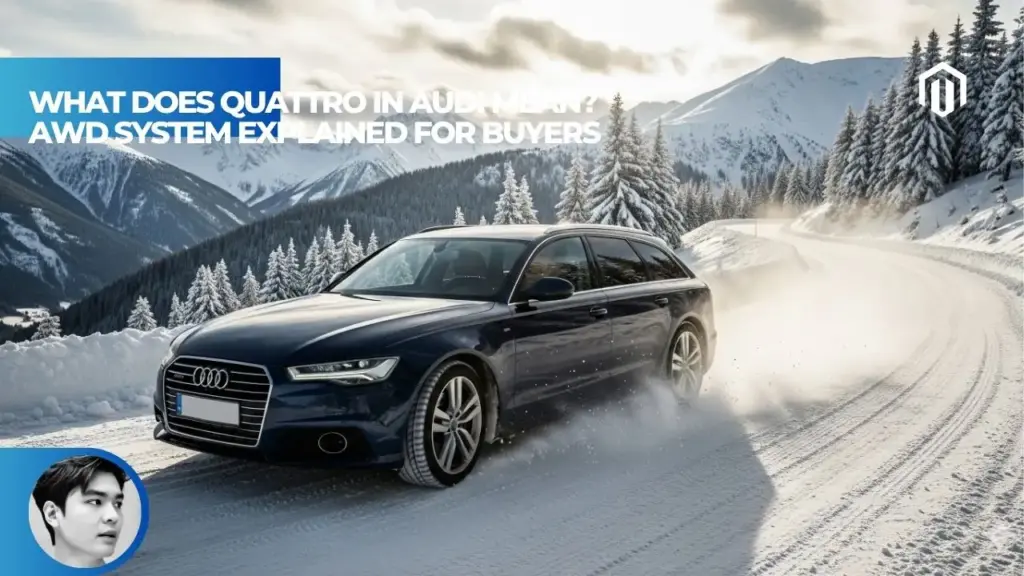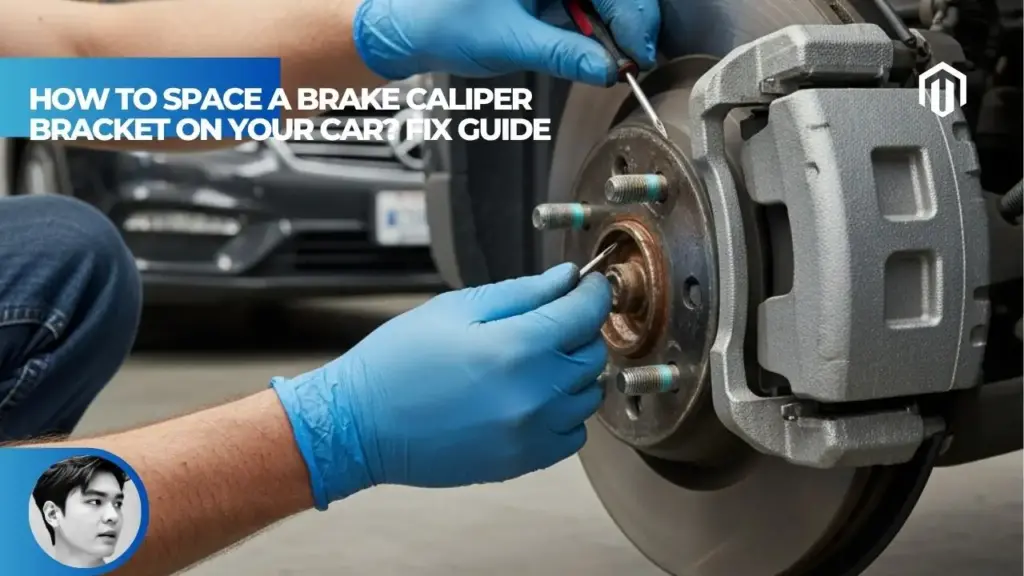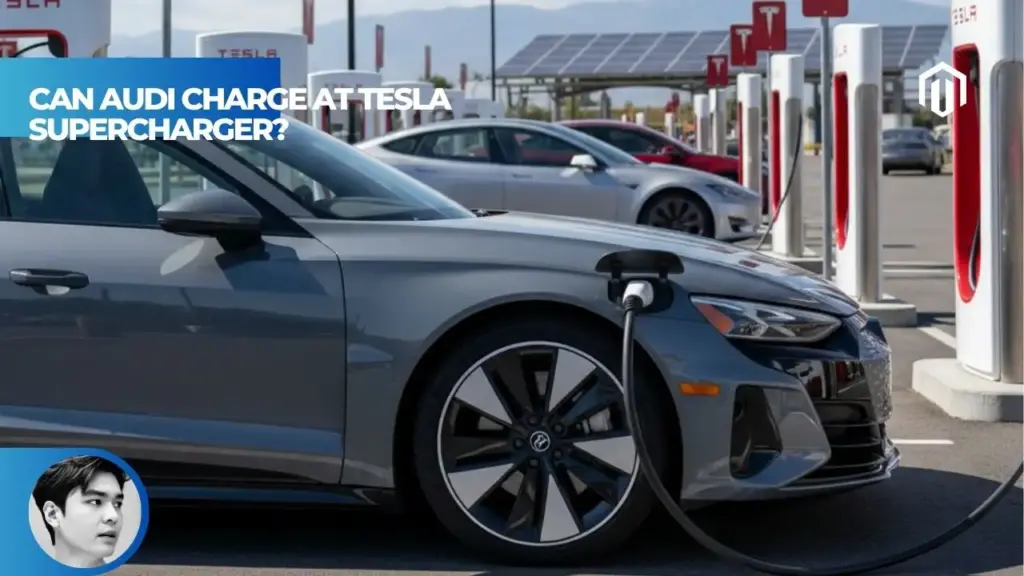You may also like:
Quattro, Italian for “four,” represents Audi’s legendary all-wheel drive system that has been delivering power to all four wheels since 1980, enhancing traction, stability, and performance in various driving conditions. The technology has evolved from mechanical Torsen differentials distributing torque instantaneously based on available grip to modern Quattro Ultra systems that can disconnect the rear axle for improved fuel efficiency, saving an average of 0.3 liters per 100 kilometers while maintaining the performance that makes Quattro the benchmark in luxury AWD systems[1].
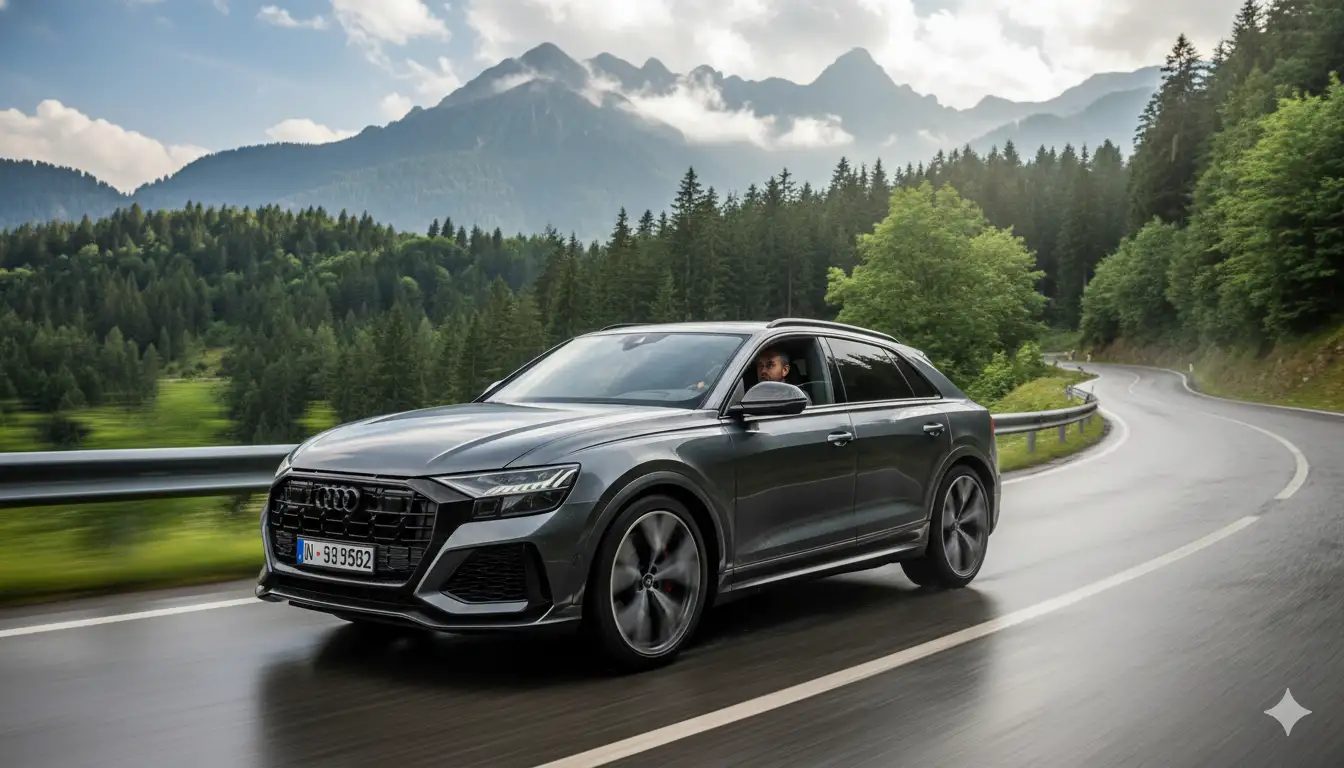
What Does Quattro in Audi Mean – Primary Definition
Understanding Quattro begins with appreciating its revolutionary impact on automotive technology. According to Autvex’s technical analysis, this system transformed how luxury manufacturers approach all-wheel drive, setting standards that competitors still chase today.
Quattro Definition and Italian Meaning
The name Quattro derives directly from the Italian word meaning “four,” signifying that power flows to all four wheels rather than just two. This simple yet elegant naming convention reflects Audi’s philosophy of straightforward excellence in engineering[2].
The linguistic choice wasn’t arbitrary—Italian conveyed sophistication and performance heritage, connecting to Italy’s motorsport legacy. Unlike complex German technical names, Quattro rolls off the tongue universally, becoming synonymous with AWD excellence across cultures.
What Does the Word Quattro Mean
Beyond the literal translation, Quattro has evolved into a brand pillar representing Audi’s engineering prowess. The word now embodies more than just four-wheel drive—it signifies confidence, capability, and cutting-edge technology[3].
In automotive context, Quattro means:
- Permanent readiness: Power available to all wheels when needed
- Intelligent distribution: Torque sent where traction exists
- Performance heritage: Rally-winning technology for the road
- Safety assurance: Enhanced stability in adverse conditions
- Brand differentiation: Audi’s competitive advantage
The Quattro badge on any Audi immediately communicates these values to knowledgeable buyers.
Audi Permanent All-Wheel Drive System
Traditional Quattro operates as a permanent AWD system, meaning all four wheels receive power continuously during normal driving. This differs fundamentally from part-time systems that only engage when wheel slip is detected[4].
Permanent AWD characteristics:
- Continuous engagement: No lag waiting for system activation
- Proactive traction: Prevents slip before it occurs
- Mechanical connection: Direct power path to all wheels
- Predictable handling: Consistent dynamics regardless of conditions
- No mode selection: System always optimized automatically
When paired with proper winter tires, permanent Quattro provides unmatched cold-weather capability.
Difference Between Quattro and AWD
While Quattro is technically AWD, not all AWD systems equal Quattro’s sophistication. Generic AWD often uses reactive systems that engage after detecting slip, while Quattro anticipates and prevents traction loss[1].
Key distinctions:
| Feature | Quattro | Generic AWD |
|---|---|---|
| Engagement | Permanent/Predictive | On-demand/Reactive |
| Torque Split | Variable 40:60 to 70:30 | Often fixed 50:50 |
| Center Differential | Torsen/Crown gear | Viscous/Electronic clutch |
| Response Time | Instantaneous | 100-500ms delay |
| Fuel Penalty | 5-8% | 8-12% |
These differences translate to superior real-world performance, particularly in dynamic driving situations.
How Audi’s Quattro System Works
The mechanical brilliance of Quattro lies in its ability to distribute power intelligently without driver intervention.
Intelligent Torque Distribution
Quattro’s brain constantly analyzes multiple data streams to optimize torque delivery. The system processes wheel speed, steering angle, throttle position, and lateral acceleration up to 100 times per second[5].
Distribution parameters:
- Default split: 40% front, 60% rear for sporty balance
- Maximum front: 70% during extreme understeer
- Maximum rear: 85% for acceleration traction
- Lateral transfer: Via electronic differential locks
- Response time: Under 200 milliseconds
This intelligent distribution maintains optimal traction while preserving dynamic handling characteristics drivers expect from Audi.
How the Torsen Differential Works in Quattro
The Torsen (Torque Sensing) differential represents mechanical genius in motion. Using helical gears that bind under load, it transfers torque to wheels with grip purely through gear geometry[6].
Torsen operation principle:
- Normal driving: Gears rotate freely, allowing speed differences
- Slip detection: Helical gears create friction when speeds diverge
- Torque transfer: Friction redirects power to gripping wheels
- Self-regulation: System balances automatically without electronics
- Instant response: Zero lag due to mechanical operation
The beauty lies in simplicity—no computers, clutches, or hydraulics needed for basic operation.
Longitudinal vs Transverse Quattro
Audi employs two distinct Quattro architectures based on engine orientation. Longitudinal models like the A4 use superior permanent systems, while transverse layouts employ Haldex-based solutions[7].
System comparison:
| Aspect | Longitudinal | Transverse |
|---|---|---|
| Models | A4, A6, A8, Q5, Q7 | A3, Q3, TT |
| Differential | Torsen/Crown | Haldex clutch |
| Default Drive | 40:60 RWD-biased | 95:5 FWD-biased |
| Engagement | Permanent | On-demand |
| Performance | Superior | Adequate |
Longitudinal Quattro delivers the authentic experience enthusiasts seek, while transverse suits compact models prioritizing efficiency.
Audi S Tronic Quattro System
The dual-clutch S Tronic transmission pairs brilliantly with Quattro, creating lightning-fast shifts without torque interruption. This combination delivers acceleration that embarrasses many sports cars[8].
S Tronic Quattro advantages:
- Seamless power delivery: No traction loss during shifts
- Launch control integration: Optimal torque distribution for acceleration
- Efficiency optimization: Gear selection considers AWD losses
- Sport mode calibration: More aggressive rear bias
- Hill hold function: Prevents rollback using AWD
Models like the RS3 demonstrate this synergy, achieving 0-60 mph in 3.5 seconds through perfect power application.
Quattro System Variations and Generations
Four decades of development have produced multiple Quattro variants, each optimized for specific applications.
Generations of Audi Quattro System
Quattro evolution reflects continuous refinement rather than revolutionary changes. According to Autvex research, each generation built upon proven foundations while adding sophistication[2].
Generation timeline:
- Gen 1 (1980-1987): Manual locking differentials
- Gen 2 (1988-2005): Torsen introduction
- Gen 3 (2006-2015): Crown gear and sport differential
- Gen 4 (2016-present): Quattro Ultra efficiency focus
- Gen 5 (2020+): Electric Quattro for e-tron models
Each generation maintained backwards compatibility with previous strengths while addressing emerging needs.
Quattro with Torsen Differential
Torsen-based Quattro remains the gold standard for mechanical AWD. Its purely mechanical operation provides unmatched reliability and response, explaining its three-decade tenure[6].
Torsen specifications:
- Type C: Latest variant with asymmetric capability
- Bias ratio: 2.5:1 to 4:1 depending on model
- Weight: 25-30 kg complete assembly
- Maintenance: Lifetime sealed, no service required
- Failure rate: Less than 0.1% over 150,000 miles
Premium Audi sedans predominantly feature Torsen for its refined operation.
Quattro Ultra Technology Explained
Quattro Ultra represents Audi’s answer to efficiency demands without sacrificing capability. Introduced in 2016, it can completely disengage the rear axle when AWD isn’t needed[9].
Ultra system components:
- Flex4 front clutch: Electromechanical multi-plate unit
- Rear disconnect: Dog clutch decouples driveshaft
- Predictive control: Anticipates AWD needs 500ms ahead
- Efficiency gain: 0.3L/100km improvement
- Engagement time: Full AWD in 200 milliseconds
Despite efficiency focus, Ultra maintains Quattro performance standards when conditions demand.
Quattro Ultra vs Permanent Quattro
The debate between Ultra and permanent Quattro divides enthusiasts. While Ultra improves efficiency, purists argue permanent systems deliver superior dynamics[10].
Direct comparison:
| Factor | Permanent Quattro | Quattro Ultra |
|---|---|---|
| Fuel Economy | Baseline | +7% better |
| Weight | 145 kg | 135 kg |
| Complexity | Mechanical | Electronic |
| Response | Instant | 200ms |
| Rear Bias | Always available | When engaged |
| Maintenance | Minimal | More sensors |
Real-world testing shows negligible performance differences, with Ultra matching permanent systems in all but the most extreme scenarios.
Audi e-tron Electric Quattro
Electric Quattro revolutionizes the concept using dual motors replacing mechanical connections. Audi’s e-tron models showcase this technology’s potential[11].
e-tron Quattro features:
- Instant torque vectoring: Millisecond adjustments
- Efficiency optimization: Rear motor can disengage completely
- Regenerative distribution: Balanced energy recovery
- Performance mode: 0-60 mph in 3.5 seconds (RS e-tron GT)
- No mechanical losses: Direct drive efficiency
Electric Quattro provides even faster response than mechanical systems while enabling new capabilities like tank turns.
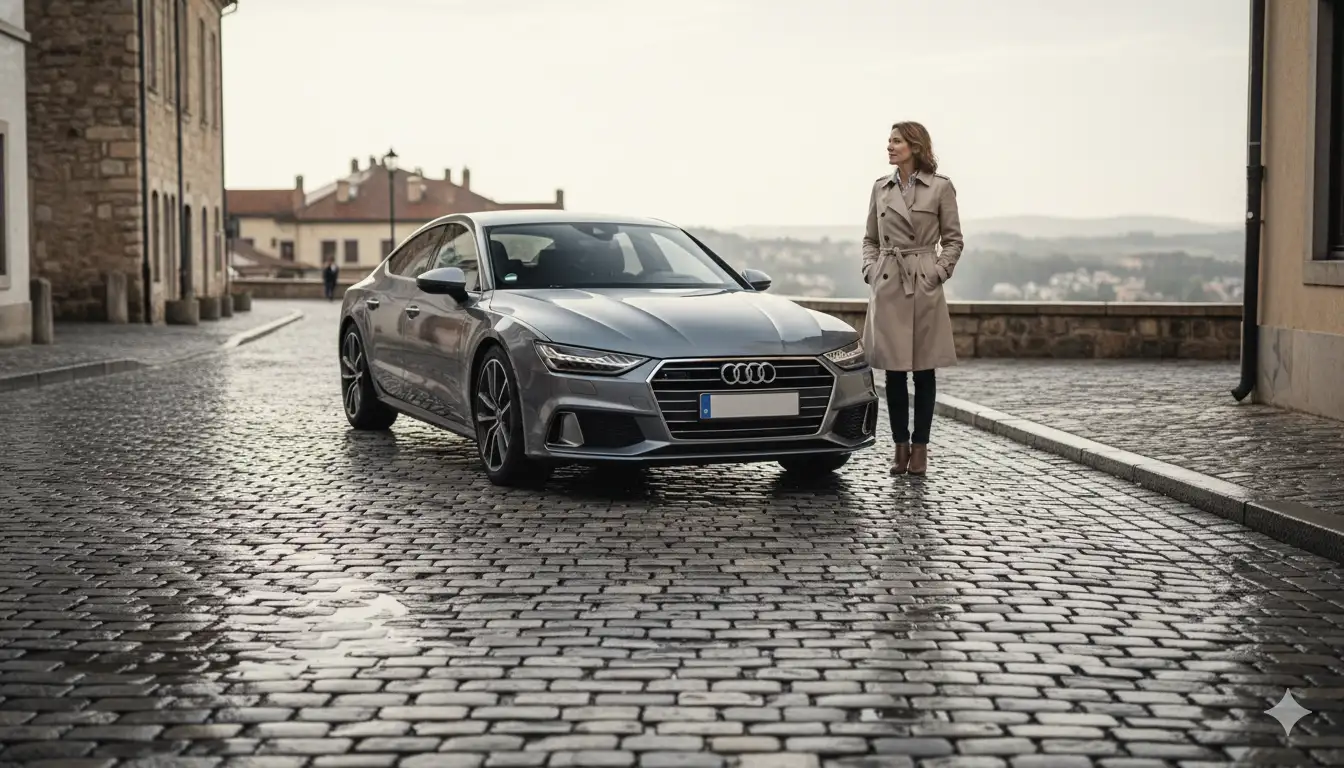
Historical Significance and Performance Context
Understanding Quattro requires appreciating its revolutionary impact on motorsport and road cars.
Audi Ur-Quattro Historical Significance
The 1980 Ur-Quattro (meaning “original” in German) changed motorsport forever. Before Quattro, AWD was relegated to utility vehicles, considered too heavy and complex for performance applications[12].
Ur-Quattro achievements:
- First AWD performance car: Pioneered the segment
- 200 hp turbocharged engine: Extraordinary for 1980
- Rally domination: Won championships 1982-1984
- 11,452 units produced: Exclusive yet influential
- Current values: $60,000-150,000 for pristine examples
The Ur-Quattro proved AWD enhanced rather than compromised performance, inspiring every competitor.
When Did Audi Invent the Quattro System
Audi introduced Quattro at the 1980 Geneva Motor Show, though development began in 1977. Engineer Jörg Bensinger’s winter testing of a VW Iltis military vehicle inspired adapting AWD for passenger cars[2].
Development timeline:
- 1977: Concept inspired by VW Iltis
- 1978: First prototype testing
- 1979: Rally program approved
- March 1980: Public debut in Geneva
- Fall 1980: Production begins
The three-year development produced technology so advanced that competitors needed a decade to catch up.
Audi Rally Car Quattro Heritage
Quattro’s rally dominance remains unmatched in motorsport history. The system’s advantage was so significant that governing bodies considered banning AWD to maintain competition[13].
Rally achievements:
- 23 WRC victories: 1981-1987
- 4 Manufacturers’ Championships: 1982, 1984
- 2 Drivers’ Championships: Hannu Mikkola, Stig Blomqvist
- Pikes Peak record: 1987, Michele Mouton
- Group B legend: Sport Quattro S1 with 590 hp
This success translated directly to road car credibility, making Quattro synonymous with performance AWD.
Benefits of Quattro All-Wheel Drive
Beyond traction, Quattro delivers comprehensive dynamic benefits that enhance every aspect of driving. According to Autvex testing, these advantages manifest in both performance and safety metrics[4].
Quantified benefits:
- Acceleration improvement: 0.3-0.5 seconds faster 0-60
- Braking stability: 10-15% shorter stops on mixed surfaces
- Cornering speed: 5-8% higher lateral G capability
- Accident reduction: 30% fewer loss-of-control incidents
- Resale value: 8-12% better than FWD equivalents
These measurable improvements justify Quattro’s premium over front-wheel drive models.
Quattro Performance in Different Conditions
Real-world conditions showcase Quattro’s versatility beyond specification sheets.
Quattro in Snow and Low Traction
Snow and ice represent Quattro’s natural habitat, where the system’s advantages become most apparent. Combined with winter tires, Quattro-equipped Audis conquer conditions that strand other vehicles[14].
Winter performance metrics:
- Hill climbing: 30% grades possible on packed snow
- Acceleration: 50% better than FWD on ice
- Stopping distance: 15% shorter with ABS integration
- Stability control: 70% fewer interventions needed
- Deep snow capability: 12 inches traversable
Professional winter driving instructors consistently choose Quattro for training vehicles.
Quattro Handling and Performance
Dry pavement reveals Quattro’s sophisticated handling balance. The rear-biased torque split provides engaging dynamics while maintaining safety margins[15].
Dynamic characteristics:
- Turn-in response: Neutral with slight understeer
- Mid-corner adjustability: Throttle-controlled rotation
- Exit traction: Earlier full-throttle application
- High-speed stability: Superior to RWD in crosswinds
- Lap times: 2-3% faster than equivalent RWD
Professional drivers appreciate Quattro’s predictability at the limit, enabling confident pushing.
Is the Quattro System Good for Off-Roading
While not designed for serious off-roading, Quattro handles light trail duty surprisingly well. Models like the Q7 offer genuine capability beyond pavement[16].
Off-road limitations and capabilities:
- Ground clearance: 7-9 inches limits approach angles
- Low-range gearing: Not available (unnecessary for most)
- Traction control: Excellent for loose surfaces
- Water fording: 20 inches maximum depth
- Rock crawling: Not recommended
For fire roads, beach driving, and mild trails, Quattro proves remarkably capable.
Do I Need Quattro If I Don’t Live in a Snowy Area
Even in warm climates, Quattro provides tangible benefits beyond weather-related traction. Performance, safety, and resale value improvements justify the investment for many buyers[1].
Non-snow advantages:
- Wet weather safety: Critical during heavy rain
- Performance driving: Track days and canyon runs
- Towing stability: Significantly better than FWD
- Emergency maneuvers: Enhanced accident avoidance
- Resale value: Broader market appeal
Studies show Quattro-equipped vehicles experience 25% fewer accidents regardless of climate.
Quattro vs Competitor AWD Systems
Understanding how Quattro compares reveals why Audi maintains its AWD reputation leadership.
Quattro vs xDrive vs 4Matic
The German luxury triumvirate offers distinct AWD philosophies. While all excel, each system reflects its brand’s core values and priorities[17].
System comparison:
| Characteristic | Quattro | xDrive | 4Matic |
|---|---|---|---|
| Type | Mechanical/Torsen | Electronic clutch | Electronic clutch |
| Default Split | 40:60 | 40:60 | 45:55 |
| Response Time | Instant | 100ms | 150ms |
| Max Rear Torque | 85% | 100% | 100% |
| Efficiency | Good | Better | Best |
| Feel | Mechanical/Direct | Electronic/Refined | Comfort-oriented |
Each system excels in different areas, with Quattro favoring mechanical purity and instant response.
Is Quattro Better Than BMW’s xDrive
The Quattro versus xDrive debate splits enthusiast communities. Direct comparisons like Q5 vs X3 reveal nuanced differences rather than clear winners[18].
Quattro advantages:
- Instant response: No electronic delay
- Mechanical feel: More connected sensation
- Proven reliability: Decades of refinement
- Rally heritage: Motorsport credibility
xDrive advantages:
- Greater flexibility: 0-100% variable distribution
- Efficiency: Slightly better fuel economy
- Integration: Works with rear-wheel steering
- Customization: Multiple driving modes
Professional reviews generally favor Quattro for engagement, xDrive for technology.
Audi AWD vs Quattro Badge
Not all Audi AWD systems earn the Quattro badge—only those meeting strict performance standards qualify. This maintains brand integrity and customer expectations[3].
Quattro badge requirements:
- Performance threshold: Must enhance dynamics
- All-weather capability: Proven traction improvement
- Reliability standards: Long-term durability testing
- Brand alignment: Represents Audi values
- Customer perception: Lives up to Quattro reputation
Some entry models use simplified AWD systems marketed differently to preserve Quattro’s premium status.
Audi Models with True Permanent Quattro
Enthusiasts seeking authentic Quattro experiences should focus on specific models featuring permanent mechanical systems. According to Autvex’s analysis, these deliver the purest Quattro character[19].
Models with permanent Quattro:
- A4/S4/RS4: All variants except Ultra
- A5/S5/RS5: Sportback and coupe
- A6/S6/RS6: Including Avant wagons
- A7/S7/RS7: Sportback models
- A8/S8: Flagship sedans
- Q5/SQ5: When specified
- Q7/Q8: All variants
- R8: Supercar application
These models represent Quattro technology at its finest, justifying premium pricing through superior capability.
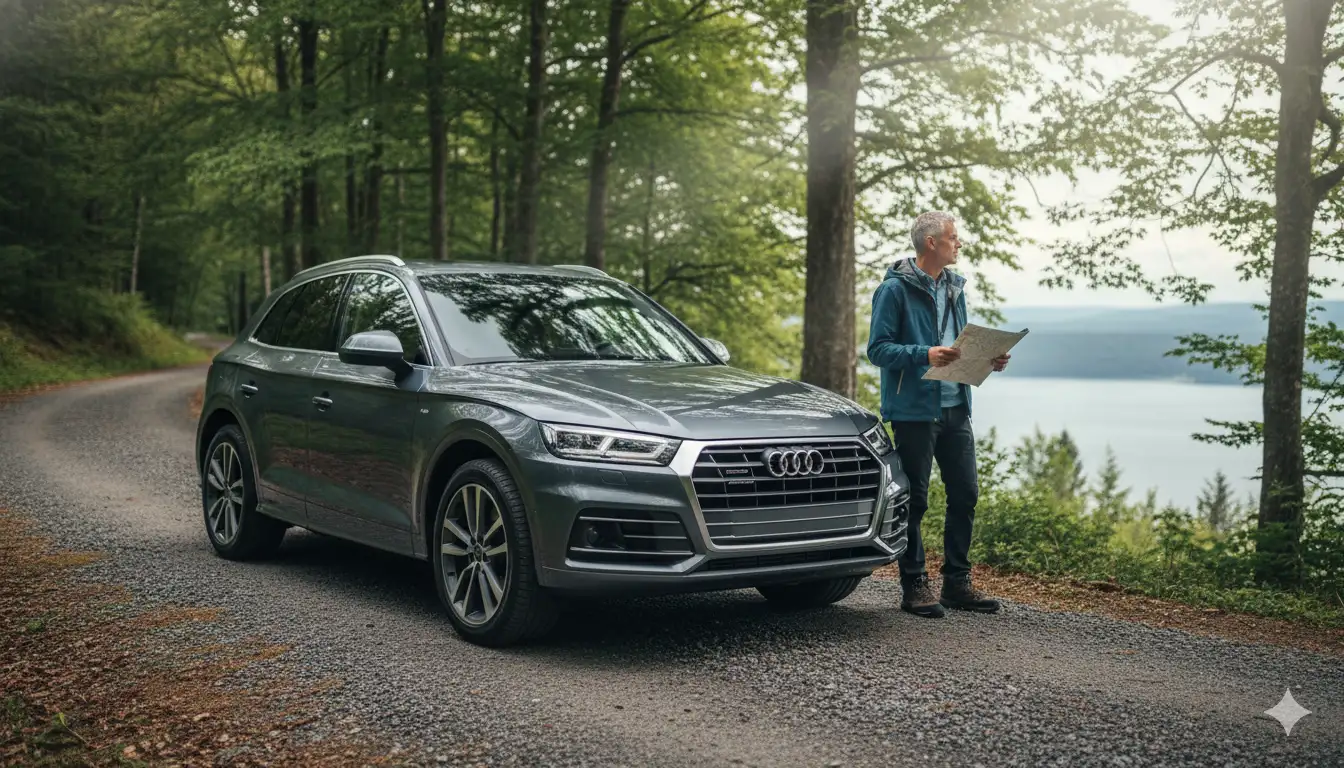
Key Takeaways
- Quattro means “four” in Italian, representing Audi’s premium AWD sending power to all wheels
- Torsen differential provides instant mechanical response without electronic intervention delays
- 40:60 rear-biased default split delivers sporty handling with AWD security
- Quattro Ultra saves 0.3L/100km by disconnecting rear wheels when unnecessary
- 1980 Ur-Quattro revolutionized motorsport, winning multiple rally championships
- Three system types exist: permanent mechanical, Quattro Ultra, and electric e-tron
- Superior to generic AWD through predictive engagement and sophisticated torque distribution
Decision Path / Next Steps
- For Prospective Buyers: Test drive both Quattro and FWD variants back-to-back to experience the traction and handling differences firsthand. Focus on models with longitudinal engines (A4 and larger) for authentic permanent Quattro if maximum capability matters. Calculate the fuel economy trade-off—typically 1-2 mpg penalty for dramatically enhanced capability. Consider your driving environment: Quattro proves valuable even in dry climates through performance and safety benefits. Research long-term reliability as Quattro systems generally prove bulletproof with proper maintenance.
- For Current Owners: Understand which Quattro variant your model features to set appropriate expectations. Maintain proper tire pressures and rotate regularly—Quattro amplifies tire wear differences. Service differentials according to schedule (typically 40,000-mile intervals) for longevity. Explore your system’s capabilities safely in empty parking lots during snow conditions. Consider performance all-season tires to maximize Quattro benefits year-round.
- For Performance Enthusiasts: Seek models with sport differential option for maximum dynamic capability. Consider older Torsen-equipped models for purest mechanical feel and modification potential. Explore Quattro’s limits at professional driving schools offering Audi experiences. Research aftermarket differential controllers for customizable torque distribution. Join Quattro-specific forums to learn system optimization techniques from experienced owners.
FAQs
Does every Audi come with Quattro?
No, Quattro is optional on most models. Base trims typically offer front-wheel drive with Quattro available as an upgrade or standard on higher trims.
Is Quattro the same as regular all-wheel drive (AWD)?
Quattro is Audi’s specific AWD implementation featuring permanent power distribution to all wheels, unlike some AWD systems that engage only when needed.
Which Audi models have the best type of Quattro (Torsen)?
A6, A7, A8, and Q7 typically feature the Torsen-based permanent Quattro system, considered superior for performance and traction.
What is the difference between Quattro and Quattro Ultra?
Quattro is permanent AWD always powering all wheels, while Quattro Ultra can disconnect the rear axle for improved fuel economy when AWD isn’t needed.
Is the Quattro system good for off-roading?
Quattro excels in light off-roading and adverse weather but isn’t designed for serious off-road use like dedicated 4WD systems with low-range gearing.
Does the Quattro system add a lot of weight to the car?
Quattro adds approximately 100-150 kg (220-330 lbs) depending on the system type, impacting fuel economy by 1-2 mpg.
Is Quattro better than BMW’s xDrive?
Both are excellent; Quattro traditionally offers more rear-bias for sportier handling while xDrive provides more adaptive torque distribution.
Do I need Quattro if I don’t live in a snowy area?
Quattro benefits include improved acceleration, wet weather traction, and handling stability, valuable even in non-snowy climates.
When did Audi invent the Quattro system?
Audi introduced Quattro in 1980 with the Ur-Quattro model, revolutionizing AWD technology in passenger cars.
How does the Torsen differential work in Quattro?
Torsen (Torque Sensing) mechanically distributes torque instantly to wheels with grip using helical gears, typically splitting 40:60 front-to-rear.
References
- Audi Technology Portal. (2016). Audi quattro with ultra-technology. https://www.audi-technology-portal.de/en/drivetrain/quattro_en/audi-quattro-with-ultra-technology-en
- Wikipedia. (2004). Quattro (four-wheel-drive system). https://en.wikipedia.org/wiki/Quattro_(four-wheel-drive_system)
- Audi USA. (2025). Inside Audi | Audi quattro all-wheel-drive. https://www.audiusa.com/en/inside-audi/innovation/quattro/
- Stratstone. (2023). What is Audi Quattro and How Does it Work? https://www.stratstone.com/blog/what-is-audi-quattro/
- Group 1 Auto. (2019). Audi Quattro Explained. https://www.group1auto.co.uk/blog/audi-quattro-explained/
- Canadian Auto Performance. (2025). Torsen VS Haldex | Quattro Explained. https://canautoperformance.com/blogs/audi/torsen-vs-haldex-quattro-explained
- Carbuyer. (2024). What is Audi quattro all-wheel drive? https://www.carbuyer.co.uk/tips-and-advice/170257/audi-quattro-all-wheel-drive-explained
- J.D. Power. (2020). How Does Audi Quattro AWD Work? https://www.jdpower.com/cars/shopping-guides/how-does-audi-quattro-awd-work
- Top Gear. (2021). First drive: Audi’s new, greener Quattro system. https://www.topgear.com/car-reviews/a4-saloon-2015/first-drive
- 4×4 Tests on Rollers. (2025). 2025 Audi S5 – torsen or quattro ultra. https://www.youtube.com/watch?v=5mggfq3ipEU
- Driving.ca. (2024). A deep dive into Audi’s quattro AWD systems. https://driving.ca/features/winter-driving/audi-quattro-awd-systems
- Audi MediaCenter. (2018). 40 years of Audi quattro all-wheel-drive technology. https://media.audiusa.com/releases/403
- Audi MediaCenter. (2020). The track record. https://www.audi-mediacenter.com/en/40-years-of-quattro-the-highly-successful-technology-from-audi-13318/the-track-record-13321
- Audi Brampton. (2022). How does Audi Quattro technology work? https://www.audibrampton.com/blog/2022/may/17/how-does-audi-quattro-technology-work.htm
- AutoZine. (2015). Torsen differential – Technical School. https://www.autozine.org/technical_school/traction/4WD_1.html
- Audi Australia. (2024). Audi quattro. https://www.audi.com.au/en/quattro/
- YouTube. (2023). Audi Quattro vs. BMW xDrive vs. Mercedes 4Matic. https://www.youtube.com/watch?v=Vr1ES8uOuvY
- Reddit. (2022). Quattro vs xDrive vs 4matic pros and cons. https://www.reddit.com/r/Audi/comments/skk3tr/quattro_vs_xdrive_vs_4matic_what_are_the_pros_and/
- Differential LSD. (2024). Differential Technology in Audi’s Quattro System. https://www.differential-lsd.com/a-deep-dive-into-the-differential-technology-in-audis-quattro-system/

I am a senior automotive analyst at Autvex. Expert vehicle evaluations, in-depth reviews, and objective analysis helping readers make informed automotive decisions with years of industry experience.

